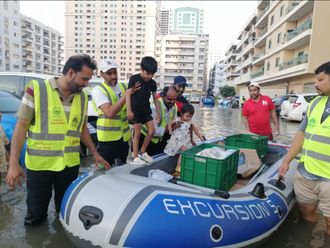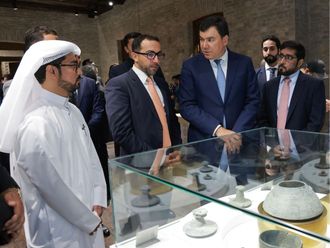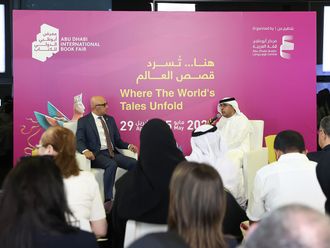Reports on the achievements of the UAE archaeological studies and discoveries were released in an international seminar held at the British Museum in London last month.
The annual seminar on Arabian Studies was held from July 17 to 19, with a number of delegates from the Arab world, including the UAE, taking part. Almost the entire proceedings of the inaugural session focused on the achievements of the UAE in the field of archaeology.
The papers on the UAE included New Archaeological Investigations at Abu Dhabi International Airport; Lithics from the Emirates - New Finds from the Abu Dhabi Airport Site; Archaeological Evidence for Pearling in the Arabian Gulf; Wadi Sur - A Large Fortification in Ras Al Khaimah; Tree-core Sampling in Ras Al Khaimah; The Iron Age in Bithnah - Two Campaigns of Excavation; and The 2002-2003 Research at Muweilah in Sharjah.
The focus of the UAE papers was on a complete report on the Golf Club site at Abu Dhabi International Airport.
The joint paper by Peter Hellyer, Executive Director of Abu Dhabi Islands Survey (Adias), and Dr Mark Beech, Adias Field Archaeologist, examined the new investigations at the site.
The site at Abu Dhabi Airport was first discovered in February 1995. Adias made a systematic surface collection of pottery, lithics and other finds during July 1995.
According to the paper, investigations suggest sporadic occupation from the Hafit period (3100-2700 BC) with maximum settlements during the second half of the third millennium BC.
The paper also examined sites linked to the coastal Umm Al Nar culture, including wares of probably Mesopotamian and Eastern Arabian origin.
Heiko Kallweit, Honorary Research Fellow at Freiburg University in Germany, presented his paper Lithics from the Emirates - New Finds from the Abu Dhabi Airport Site.
He examined, in his paper, the new lithic finds so far not reported from the Gulf region. It also re-examines the finds from previous excavations at the site.
"Additionally, new diagnostic stone tools were recorded during recent field work. Crescent shaped microliths are reported from two different sub-sites (ADA 1 and ADA 7) of the Abu Dhabi Airport site. They seem to be similar with the finds of the Tihama, Saudi Arabia. The microliths are likely to be part of a Bronze Age technology."
Another centre of attraction at the seminar was the paper on the discoveries in Ras Al Khaimah, which examined a fortified valley in the emirate.
The paper Wadi Sur - A Large Fortification in Ras Al Khaimah, was presented by Christian Velde, Resident Archaeologist at the National Museum of Ras Al Khaimah.
According to the paper, Wadi Sur, discovered by Beatrice de Cardi, was thought to be a dam or floodwater barrier erected to keep the Wadi Bih floods out of Shimal and Nakheel agricultural area.
"A recent detailed examination has revealed that it originally consisted of a rampart made from gravel supported by a mudbrick wall on top that clearly has a defensive purpose."
According to him, the seven-km long construction runs from the mountains at the edge of the agricultural area to the creek of Ras Al Khaimah and is still preserved to a height of two metres.
Around 50 round towers were built at a distance of 150m from each other along the wall. A ditch, at least 2.5m deep, runs in front of the wall.
"We believe that the defensive wall was built between the 13th-16th centuries AD to secure fertile palm gardens of Shimal and Nakheel from tribal raids which served as the main hinterland for the large trading town of Julfar," he told Gulf News.
The paper described the wall, the towers, and the results of a recent survey and investigation, and speculates on the possible date and function of the structure.
Reports on archaeological finds in UAE released
Reports on archaeological finds in UAE released












